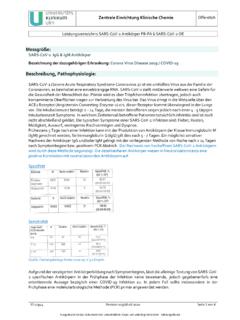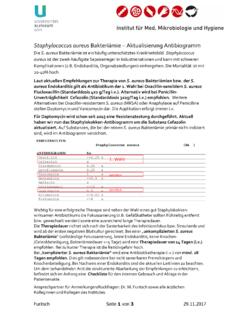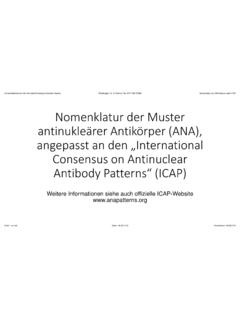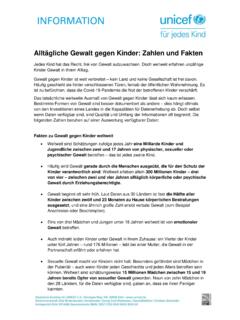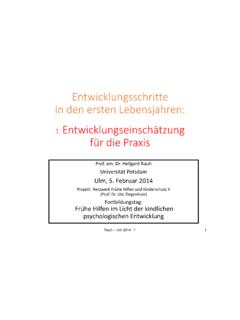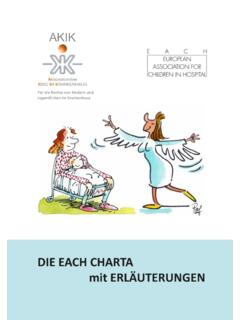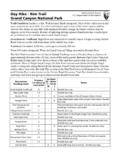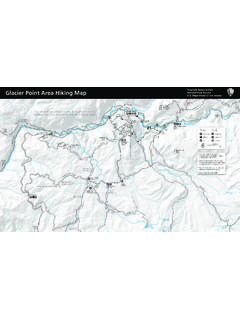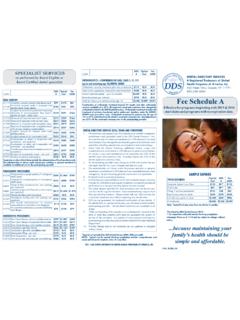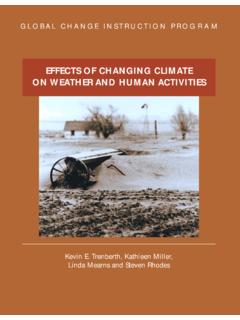Transcription of 2020ESC Guidelines for the management of acute coronary ...
1 2020 ESC Guidelines for the management ofacute coronary syndromes in patientspresenting without persistent ST-segmentelevationThe Task Force for the management of acute coronary syndromesin patients presenting without persistent ST-segment elevation ofthe European Society of Cardiology (ESC)Authors/Task Force Members: Jean-Philippe Collet* (Chairperson) (France),Holger Thiele* (Chairperson) (Germany), Emanuele Barbato (Italy),Olivier Barthe le my (France), Johann Bauersachs (Germany), Deepak L. Bhatt(United States of America), Paul Dendale (Belgium), Maria Dorobantu (Romania),Thor Edvardsen (Norway), Thierry Folliguet (France), Chris P. Gale(United Kingdom), Martine Gilard (France), Alexander Jobs (Germany),Peter Ju ni (Canada), Ekaterini Lambrinou (Cyprus), Basil S. Lewis (Israel),Julinda Mehilli (Germany), Emanuele Meliga (Italy), Be la Merkely (Hungary),Christian Mueller (Switzerland), Marco Roffi (Switzerland), Frans H.
2 Rutten(Netherlands), Dirk Sibbing (Germany), George Siontis (Switzerland)* Corresponding authors: Jean-Philippe Collet, Sorbonne Universite , ACTION Study Group, INSERM UMRS 1166, Institut de Cardiologie, Ho pital Pitie -Salp^etrie`re (AssistancePublique- Ho pitaux de Paris) (AP-HP), 83, boulevard de l Ho pital, 75013 Paris, France. Tel 33 01 42 16 29 62, E-mail: Thiele, Department of Internal Medicine/Cardiology, Heart Center Leipzig at University of Leipzig, Stru mpellstr. 39, 04289 Leipzig, Germany. Tel: 49 341 865 1428, Fax: 49 341 865 1461, E-mail: Committee for Practice Guidelines (CPG) and National Cardiac Societies document reviewers, and Author/Task Force Member affiliations: listed in the entities having participated in the development of this document:Associations: Association for acute CardioVascular Care (ACVC), Association of Cardiovascular Nursing & Allied Professions (ACNAP), European Association ofCardiovascular Imaging (EACVI), European Association of Preventive Cardiology (EAPC), European Association of Percutaneous Cardiovascular Interventions (EAPCI), EuropeanHeart Rhythm Association (EHRA), Heart Failure Association (HFA).
3 Councils: Council for Cardiology Groups: Cardiovascular Pharmacotherapy, Cardiovascular Surgery, coronary Pathophysiology and Microcirculation, content of these European Society of Cardiology (ESC) Guidelines has been published for personal and educational use only. No commercial use is authorized. No part ofthe ESC Guidelines may be translated or reproduced in any form without written permission from the ESC. Permission can be obtained upon submission of awritten request toOxford University Press, the publisher of theEuropean Heart Journaland the party authorized to handle such permissions on behalf of the ESC ESC Guidelines represent the views of the ESC and were produced after careful consideration of the scientific and medical knowledge, and the evidence avail-able at the time of their publication. The ESC is not responsible in the event of any contradiction, discrepancy and/or ambiguity between the ESC Guidelines and any other offi-cial recommendations or Guidelines issued by the relevant public health authorities, in particular in relation to good use of healthcare or therapeutic strategies.
4 Healthprofessionals are encouraged to take the ESC Guidelines fully into account when exercising their clinical judgment, as well as in the determination and the implementation of pre-ventive, diagnostic, or therapeutic medical strategies; however, the ESC Guidelines do not override, in any way whatsoever, the individual responsibility of health professionals tomake appropriate and accurate decisions in consideration of each patient s health condition and in consultation with that patient and, where appropriate and/or necessary, thepatient s caregiver. Nor do the ESC Guidelines exempt health professionals from taking into full and careful consideration the relevant official updated recommendations orguidelines issued by the competent public health authorities, in order to manage each patient s case in light of the scientifically accepted data pursuant to their respective ethicaland professional obligations.
5 It is also the health professional s responsibility to verify the applicable rules and regulations relating to drugsand medical devices at the time European Society of Cardiology 2020. All rights reserved. For permissions, please email: Heart Journal (2020)00,1 79 ESC from by guest on 25 November Reviewers: Adnan Kastrati (CPG Review Coordinator) (Germany), Mamas A. Mamas (CPGR eview Coordinator) (United Kingdom), Victor Aboyans (France), Dominick J. Angiolillo (United States ofAmerica), Hector Bueno (Spain), Raffaele Bugiardini (Italy), Robert A. Byrne (Ireland), Silvia Castelletti(Italy), Alaide Chieffo (Italy), Veronique Cornelissen (Belgium), Filippo Crea (Italy), Victoria Delgado(Netherlands), Heinz Drexel (Austria), Marek Gierlotka (Poland), Sigrun Halvorsen (Norway), KristinaHermann Haugaa (Norway), Ewa A. Jankowska (Poland), Hugo A. Katus (Germany), Tim Kinnaird (UnitedKingdom), Jolanda Kluin (Netherlands), Vijay Kunadian (United Kingdom), Ulf Landmesser (Germany),Christophe Leclercq (France), Maddalena Lettino (Italy), Leena Meinila (Finland), Darren Mylotte(Ireland), Gjin Ndrepepa (Germany), Elmir Omerovic (Sweden), Roberto F.
6 E. Pedretti (Italy), Steffen (United Kingdom), Anna Sonia Petronio (Italy), Gianluca Pontone (Italy), Bogdan A. Popescu(Romania), Tatjana Potpara (Serbia), Kausik K. Ray (United Kingdom), Flavio Luciano Ribichini (Italy),Dimitrios J. Richter (Greece), Evgeny Shlyakhto (Russian Federation), Iain A. Simpson (United Kingdom),Miguel Sousa-Uva (Portugal), Robert F. Storey (United Kingdom), Rhian M. Touyz (United Kingdom),Marco Valgimigli (Switzerland), Pascal Vranckx (Belgium), Robert W. Yeh (United States of America)The disclosure forms of all experts involved in the development of these Guidelines are available on theESC theSupplementary Datawhich include background information and detailed discussion of the datathat have provided the basis for the Guidelines acute cardiac care acute coronary syndrome angioplasty anticoagulation antiplatelet apixaban aspirin atherothrombosis betablockers bleedings bivalirudin bypass surgery can-grelor chest pain unit clopidogrel dabigatran diabetes dual antithrombotic therapy early inva-sive strategy edoxaban enoxaparin European Society of Cardiology fondaparinux glycoprotein IIb/IIIa inhibitors heparin high-sensitivity troponin minoca myocardial ischaemia myocardial infarction nitrates non-ST- elevation myocardial infarction platelet inhibition prasugrel recommendations revascularization rhythm monitoring rivaroxaban stent ticagrelor triple therapy unstable anginaTable of
7 ContentsAbbreviationsandacronyms .. 51 Preamble .. 72 Introduction .. Universal definition of myocardial infarction .. Types 3 5myocardialinfarction .. Unstable angina in the era of high-sensitivity cardiactroponinassays .. Number and breakdown of classes ofrecommendations(SupplementaryData) .. 103 Diagnosis .. (SupplementaryData) .. Physical examination (Supplementary Data) .. Biomarkers: high-sensitivity cardiac troponin .. Central laboratory vs. point-of-care .. Rapid rule-in and rule-out algorithms .. Confounders of cardiac troponin concentration .. Practical guidance on how to implement theEuropean Society of Cardiology 0 h/1 h algorithm .. Avoiding misunderstandings: time to decision=timeofblooddrawrn-aroundtime .. 174 Riskassessmentandoutcomes .. Electrocardiogram indicators (Supplementary Data) .. Clinical scores for risk assessment (Supplementary Data).
8 215 Pharmacologicaltreatments .. Antiplatelet drugs and dual antiplatelet therapy .. 232 ESC GuidelinesDownloaded from by guest on 25 November .. Peri-interventional anticoagulant treatment .. Peri-interventional antiplatelet treatment .. Post-interventional and maintenance treatment .. Pharmacological treatment of ischaemia(SupplementaryData) .. Supportive pharmacological treatment(SupplementaryData) .. Nitrates and beta-blockers (Supplementary Data) .. Managing oral antiplatelet agents in patients requiringlong-termoralanticoagulants .. patients with atrial fibrillation without mechanicalprosthetic heart valves or moderate-to-severe mitralstenosis undergoing percutaneous coronary interventionor managed medically (Supplementary Data) .. patients requiring vitamin K antagonists or undergoingcoronaryarterybypasssurgery .. management of acute bleeding events(SupplementaryData).
9 General supportivemeasures(SupplementaryData) .. Bleeding events on antiplatelet agents(SupplementaryData) .. Bleeding events on vitamin K antagonists(SupplementaryData) .. Bleeding events on non-vitamin K antagonist oralanticoagulants(SupplementaryData) .. Non-access-related bleeding events(SupplementaryData) .. Bleeding events related to percutaneous coronaryintervention(SupplementaryData) .. Bleeding events related to coronary artery bypasssurgery(SupplementaryData) .. Transfusion therapy (Supplementary Data) .. Recommendations for bleeding management andblood transfusion in non-ST-segment elevation acutecoronarysyndromesforanticoagulatedp atients .. 346 Invasivetreatments .. Invasive coronary angiography and revascularization .. Routine invasive vs. selective invasiveapproach(SupplementaryData) .. (<2h) .. Early invasive strategy (<24 h) .. Pattern of coronary artery disease in non-ST-segmentelevation acute coronary syndrome (Supplementary Data).
10 How to identify the culprit lesion? (SupplementaryData) .. Spontaneous coronary artery dissection .. Fractional flow reserve, instantaneous wave-freeratio, and other resting indices (Supplementary Data) .. Instantaneous wave-free ratio and otherrestingindices .. patients who are not candidates for invasive coronaryangiography .. patients with coronary artery disease not amenable torevascularization .. Percutaneous coronary intervention vs. coronary arterybypasssurgery .. management of patients with ongoing myocardialischaemia .. Recommendations for coronary revascularization .. 407 Myocardial infarction with non-obstructive coronary arteriesandalternativediagnoses .. 418 Specialpopulations .. (SupplementaryData) .. Thrombocytopenia related to glycoprotein IIb/IIIainhibitors(SupplementaryData) .. Heparin-induced thrombocytopenia(SupplementaryData) .. 469 Long-term management of non-ST-segment elevation acute coronarysyndrome(SupplementaryData).

